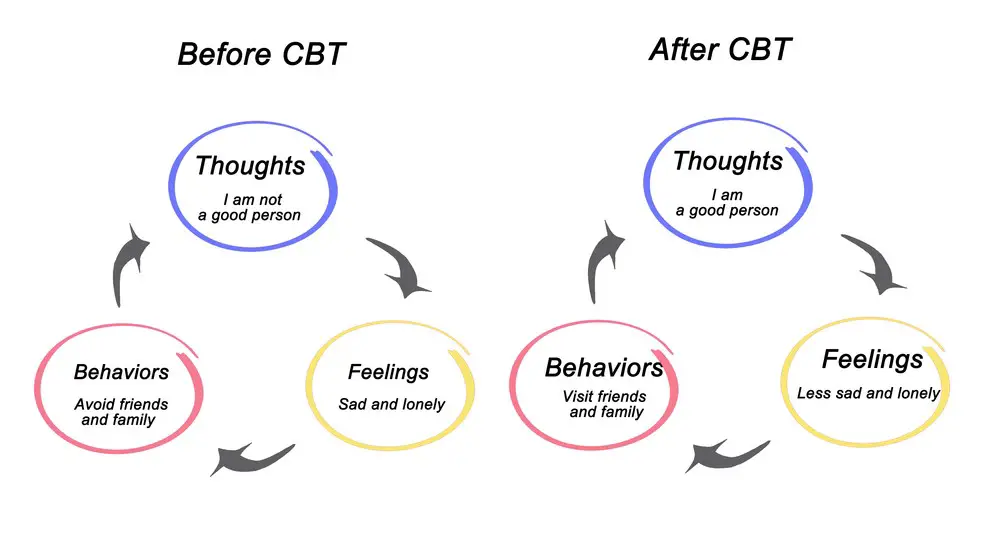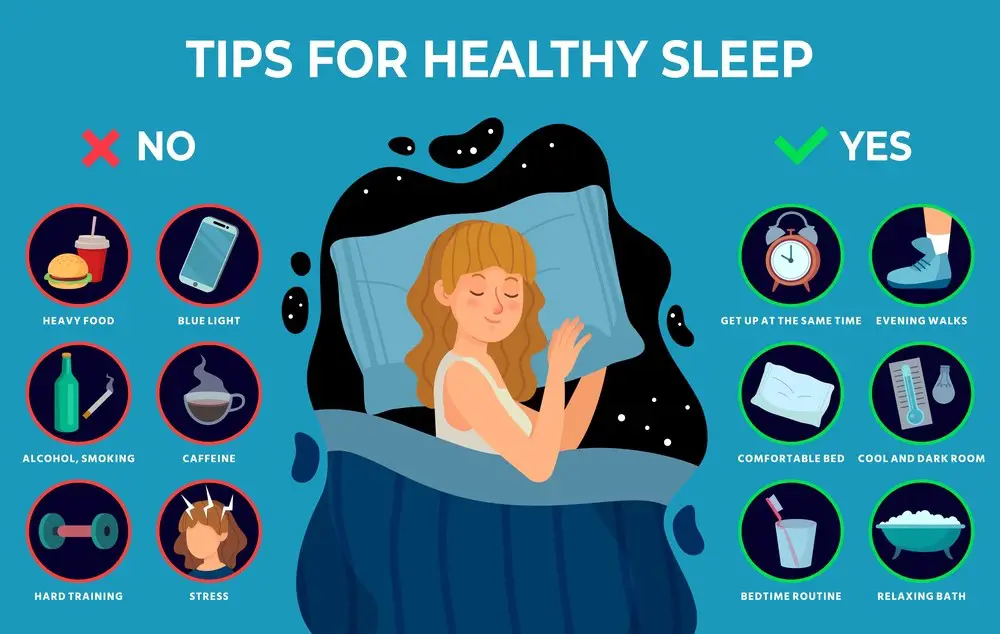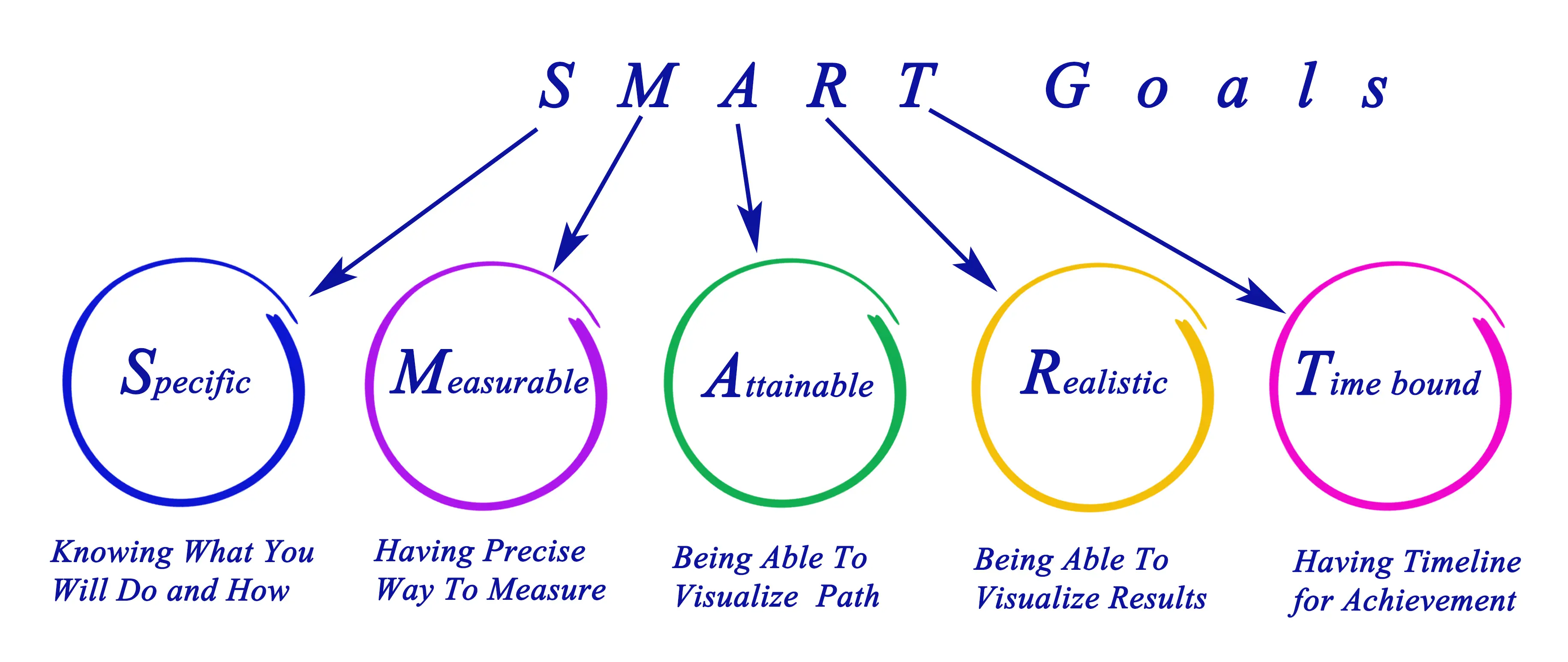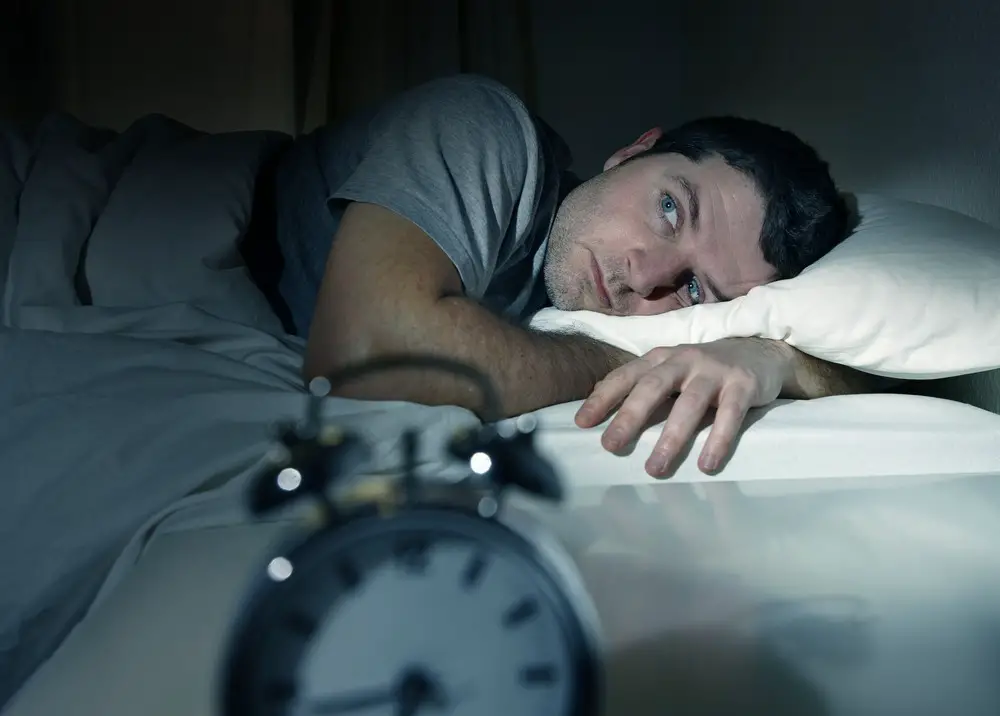As a BetterHelp affiliate, we receive compensation from BetterHelp if you purchase products or services through the links provided
To shed light on the role of cognitive behavioral therapy in improving sleep disorders, we have gathered insights from three experts in the field. From an Adult and Geriatric Psychiatrist’s perspective on the effectiveness and techniques of CBT-I to a Sleep Specialist’s explanation of the two-component structure of CBT, this article provides a comprehensive understanding of the topic. Dive in to explore these unique perspectives and more.
- Effectiveness and Techniques of CBT-I
- Cognitive Restructuring and Sleep Hygiene
- Two-Component Structure of CBT
 1. Effectiveness and Techniques of CBT-I
1. Effectiveness and Techniques of CBT-I
Cognitive Behavioral Therapy for Insomnia (CBT-I) is a highly effective, evidence-based treatment for improving sleep disorders. CBT-I helps individuals identify and challenge negative thoughts and worries about sleep. It teaches them to reframe thoughts in a more positive and realistic way, reducing sleep-related anxiety and stress.
CBT-I educates individuals about healthy sleep habits. It often incorporates relaxation techniques to reduce physiological arousal before bedtime, which can help calm the mind and body. CBT-I is tailored to each individual’s specific sleep problems and needs. A qualified therapist or psychologist usually delivers it, but self-help resources and online programs are also available.
It’s important to note that the effectiveness of CBT-I may vary from person to person. Still, it is often considered one of the most successful non-pharmacological treatments for sleep disorders like insomnia.
C Freeman, MD, MBA, Adult and Geriatric Psychiatrist
2. Cognitive Restructuring and Sleep Hygiene
Cognitive Behavioral Therapy (CBT) is a method that enables individuals to identify and alter negative thoughts linked to sleep problems. It educates them on how to substitute these thoughts with positive ones and actions that promote improved sleep.
Cognitive restructuring is one strategy employed in CBT. It helps clients recognize self-sabotaging beliefs or cognitive distortions and guides them in challenging and altering these beliefs to become more reasonable and constructive. CBT can aid individuals in enhancing their sleep hygiene, which pertains to evening rituals that aid relaxation and sleep onset.
Exposure to bright lights or watching television in the bedroom can adversely affect sleep quality. Furthermore, sleep hygiene is considered a pivotal element in forecasting the onset of insomnia (Carrión-Pantoja et al., 2022).
Dr. Jameca Woody Cooper, Clinical and Criminal Psychologist, Emergence Psychological Services/Dr. Jameca/
3. Two-Component Structure of CBT
Cognitive Behavioral Therapy is an evidence-based treatment for sleep disorders, particularly insomnia. It usually consists of two parts: cognitive and behavioral.
The cognitive component helps patients sleep better by changing how they think. It challenges dysfunctional beliefs about sleep and reduces anxiety.
The behavioral component teaches patients how to create positive bedtime habits. These include calming the bedroom, practicing good sleep hygiene, and following a regular sleep schedule.
Cognitive Behavioral Therapy aims to reset the body’s internal clock by encouraging a consistent wake-up time. However, it’s important to consult a healthcare professional before significantly changing your routine.
James Higgins, Sleep Specialist and Founder of Ethical Bedding, Ethical Bedding
Hack Your Sleep: Quick Tips to Implement CBT Techniques at Home
Sure, Cognitive Behavioral Therapy sounds like a serious commitment—and it often is when done with a healthcare professional. But you’re not out of luck if you’re looking for quick and easy-to-implement ideas at home. Here’s how to dip your toes into CBT for better sleep.
1. Monitor Your Thoughts
- Be a Thought Detective: Before bed, jot down your thoughts. Are your thoughts overwhelmingly negative or positive?
- Reframe and Revise: Catch yourself thinking, “I’ll never fall asleep!”? Flip it to something more realistic, like “It might take me a while, but eventually, I will fall asleep.”
2. Create a Sleep Sanctuary
- Color Matters: Opt for calm, muted colors in your bedroom to inspire a peaceful environment.
- Tech-Free Zone: Keep gadgets away from the bed to help your brain associate the bedroom with sleep, not work or entertainment.
3. The 20-Minute Rule
- Clock-Watching: Leave the bedroom if you can’t fall asleep in 20 minutes. Read or listen to soothing music until you feel sleepy.
- Revisit the Bed: Once you’re sleepy again, go back to bed. The idea is to break the cycle of tossing and turning and associate your bed with actual sleep.
4. Set a Sleep Schedule and Stick to It
- Consistency is Key: Try to go to bed and wake up simultaneously every day, even on weekends.
- Avoid Drastic Changes: If you’re used to sleeping late, gradually adjust by 15 minutes earlier each night until you reach your desired bedtime.
5. Mind Your Food and Drink
- Last Call for Caffeine: Make sure to have your last cup of coffee at least six hours before bedtime.
- Eat Light: Avoid heavy meals right before bed. A light snack is fine, but keep it simple.
With these tips, you don’t have to be an insomniac-in-waiting. You can take proactive steps to sleep better without committing to a full-blown CBT program immediately. Just remember, consult a healthcare professional for a comprehensive treatment plan tailored specifically for you. Happy dreaming!
 Red Flags: When It’s Time to Trade Sheep-Counting for Expert Consultation
Red Flags: When It’s Time to Trade Sheep-Counting for Expert Consultation
If you’ve tried a bunch of hacks, tips, and tricks but still find yourself scrolling through late-night memes instead of catching some Z’s, it might be time to up the ante. Here are some tell-tale signs that indicate you should probably consult a sleep specialist:
1. Sleepless Nights Aren’t Just an Occasional Guest
- Frequency Matters: If sleepless nights are more of a “regular visitor” than a “rare occurrence,” that’s a problem.
- Duration Counts: Struggling for a few weeks? Could be stress. Several months? Time to see a specialist.
2. Your Daytime Functioning Takes a Hit
- Concentration Woes: If you find it challenging to focus on tasks or experience a mental fog, that’s a red flag.
- Mood Swings: Irritability and mood swings are not just teen drama but signs of poor sleep.
3. You’ve Mastered the Art of Snoring or Have Breathing Pauses
- Not Just a Nuisance: Snoring might seem trivial, but it can indicate sleep apnea, a serious condition.
- Breathing Pauses: If your partner notices that you stop breathing briefly while asleep, don’t ignore it. It’s specialist time.
4. Over-the-Counter Remedies and Home Practices Aren’t Cutting It
- Temporary Fixes: If you rely on sleep medication or alcohol to doze off, it’s a band-aid, not a solution.
- Failed DIY: When home remedies like herbal teas and relaxation techniques don’t yield consistent results, consider professional help.
5. Sleep Anxiety Sets In
- Dread the Bed: If the mere thought of bedtime sends a shiver down your spine due to anticipated sleep issues, it’s a warning sign.
- Vicious Cycle: Anxiety about not sleeping well can prevent good sleep, creating a self-perpetuating cycle that’s hard to break.
Don’t wait for a sleepless epiphany if you’re ticking off multiple boxes on this list. Consult a sleep specialist for an evaluation, diagnosis, and a tailored treatment plan to help you reclaim those dreamy nights.
 Hitting the Hay: Setting Goals and Monitoring Progress for Better Sleep
Hitting the Hay: Setting Goals and Monitoring Progress for Better Sleep
Ah, the elusive good night’s sleep. You know you need it, but it seems just out of reach. Don’t worry; you’re not alone. Setting concrete sleep goals and monitoring your progress is an excellent first step. So, let’s dive into the steps to get you snuggled in and snoozing soundly.
Step 1: Make Your Sleep Goals SMART
Yep, even sleep goals can benefit from being:
- Specific: What exactly do you want to improve? Hours of sleep? Sleep quality?
- Measurable: Track your sleep with a sleep diary or use a sleep app.
- Achievable: Aim for gradual adjustments. An extra 15 minutes of sleep can go a long way!
- Relevant: Make sure your goal will genuinely improve your life.
- Time-Bound: Set a reasonable deadline to achieve your sleep goal.
Step 2: Break It Down to Mini-Goals
Sleep improvement is a journey, and every journey has milestones.
- Adjust Bedtime: Slowly adjust your bedtime in 15-minute increments.
- Cut Caffeine: Reduce your intake week by week.
Step 3: Choose Your Tracking Tools
- Sleep Diary: Document your sleep patterns and feelings each morning.
- Apps: Sleep-tracking apps can be your best friend in gathering sleep data.
Step 4: Celebrate the Zzz’s
- Immediate Rewards: Enjoy a luxurious sleep mask after a week of hitting your sleep goals.
- Visuals: Keep a sleep calendar on your wall and mark off successful days with stickers or highlighters.
Step 5: Regularly Review and Revise
- Weekly Check-ups: Review your sleep data and diary entries each week.
- Tweak As Needed: Having a hard time adjusting to your new bedtime? Revisit and revise your goals.
Step 6: Seek Professional Input
- Primary Care Provider: Discuss your sleep goals and results.
- Sleep Specialist: A specialist’s input can be invaluable if issues persist.
Step 7: Reflect and Re-adjust
- Morning Journal: Spend a few minutes each morning jotting down your feelings.
- Metrics: Look back on your sleep data to see the trends and make necessary adjustments.
Quick Recap:
- Establish SMART sleep goals.
- Divide your main goal into manageable mini-goals.
- Use tools like sleep diaries or apps to track your progress.
- Review and adjust your plan as needed.
Improving your sleep is an ongoing process, but you can achieve those dreamy nights with consistent effort and keen tracking. Sweet dreams!
- 7 Ideas to Help You Relax and Unwind on a Family Vacation - April 27, 2025
- How Having Cybersecurity Protection Helps You Relax - April 25, 2025
- 8 Reasons Why Spending Time Outside Calms You Down - April 25, 2025
This site contains affiliate links to products. We will receive a commission for purchases made through these links.


 1. Effectiveness and Techniques of CBT-I
1. Effectiveness and Techniques of CBT-I
 Red Flags: When It’s Time to Trade Sheep-Counting for Expert Consultation
Red Flags: When It’s Time to Trade Sheep-Counting for Expert Consultation Hitting the Hay: Setting Goals and Monitoring Progress for Better Sleep
Hitting the Hay: Setting Goals and Monitoring Progress for Better Sleep
